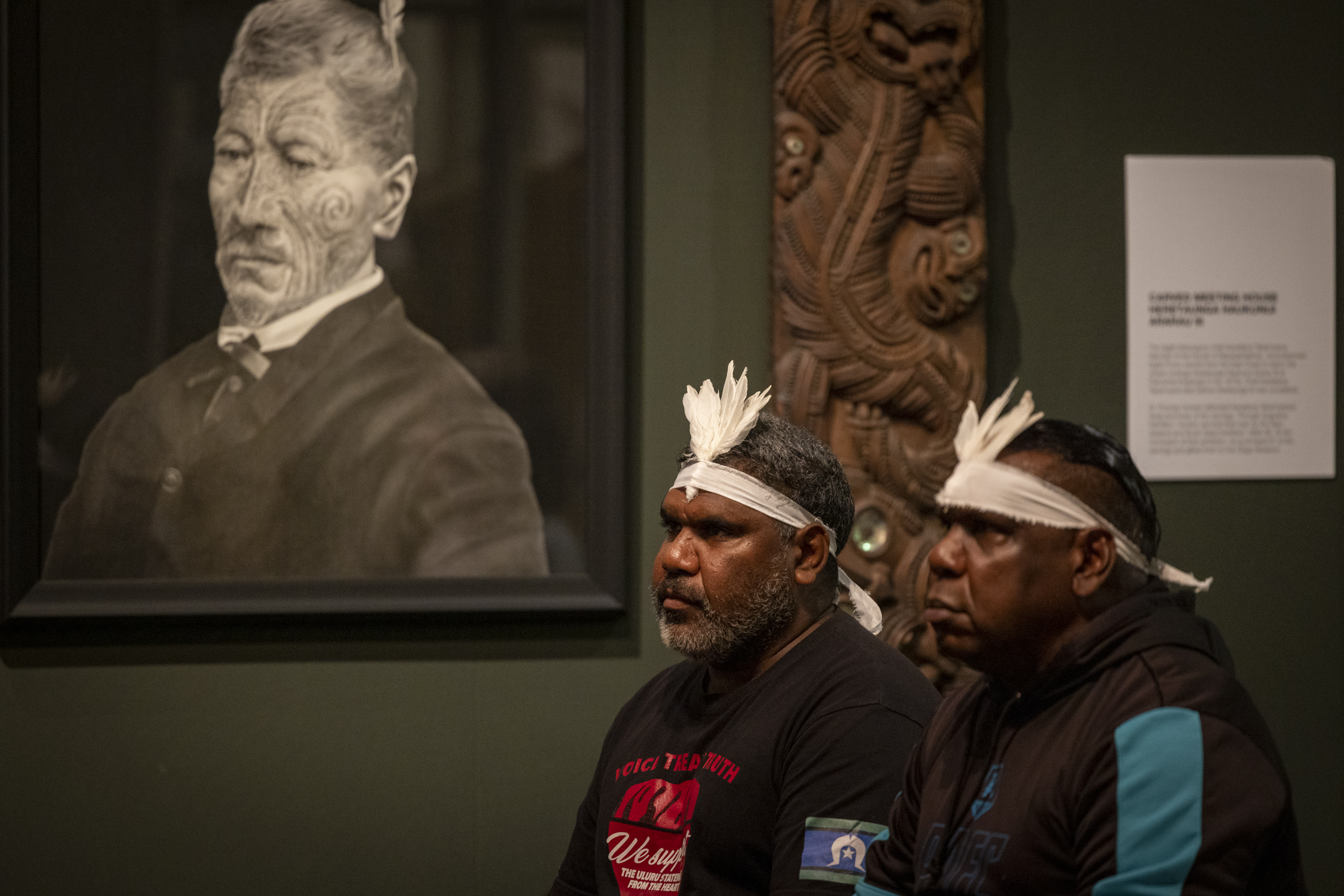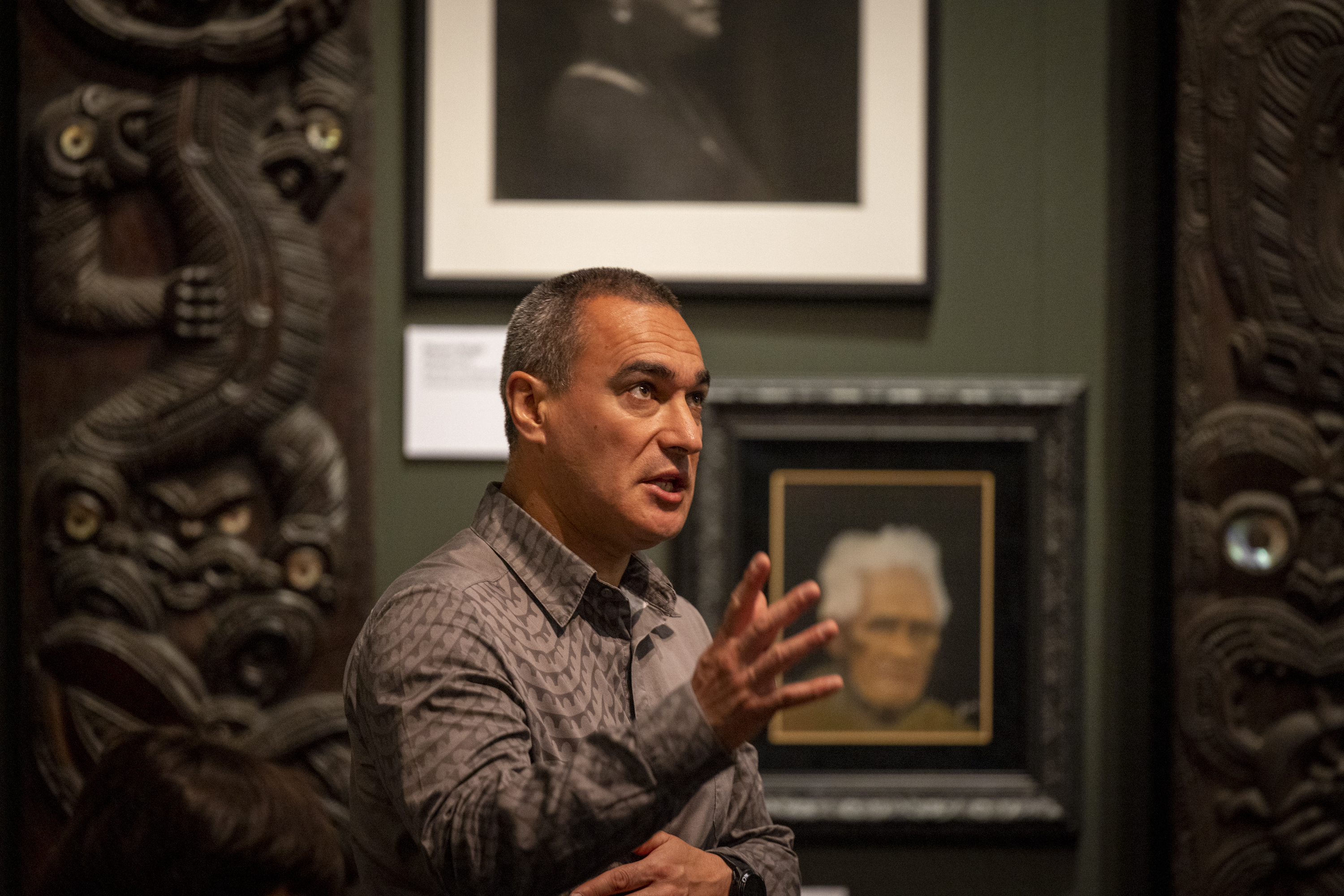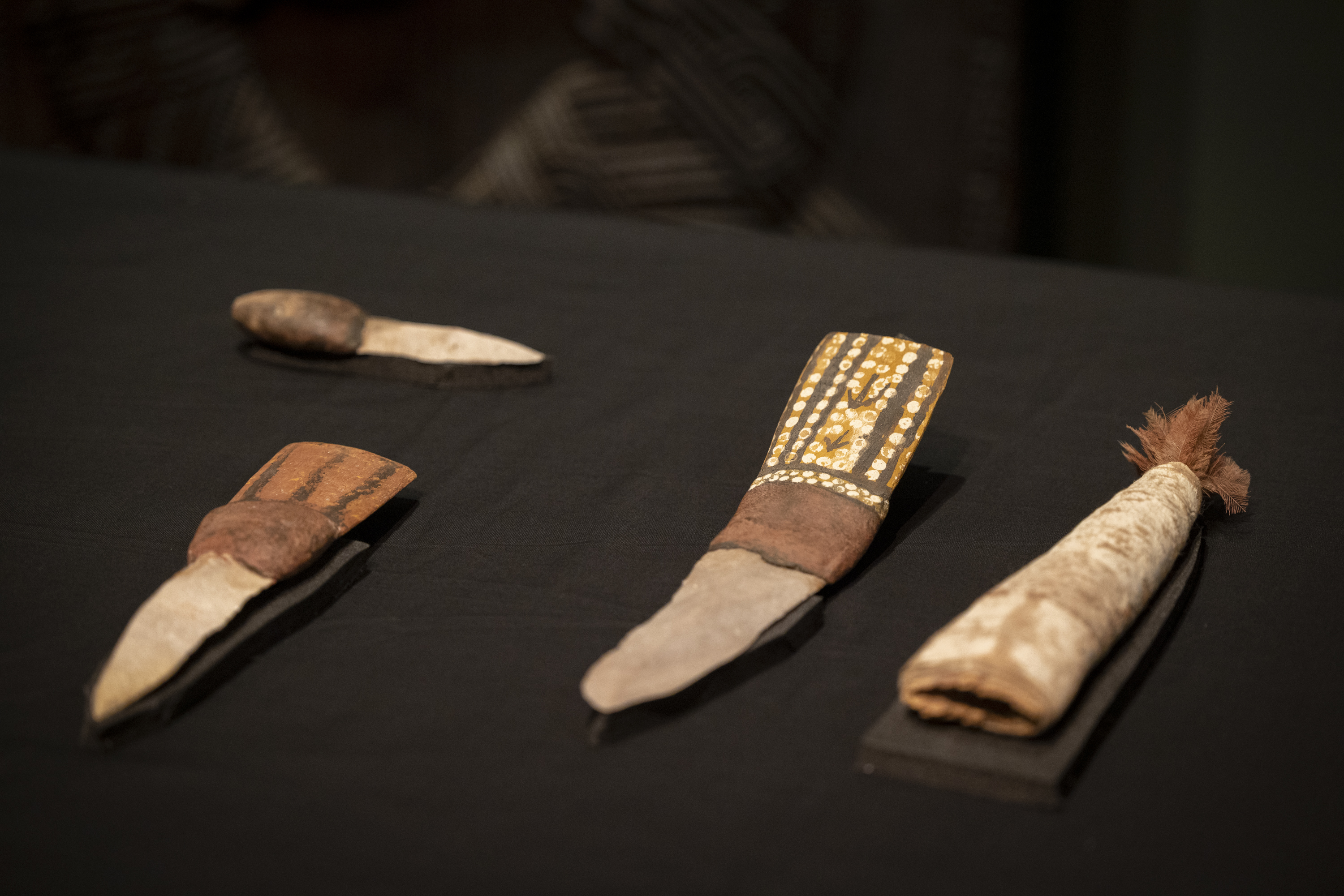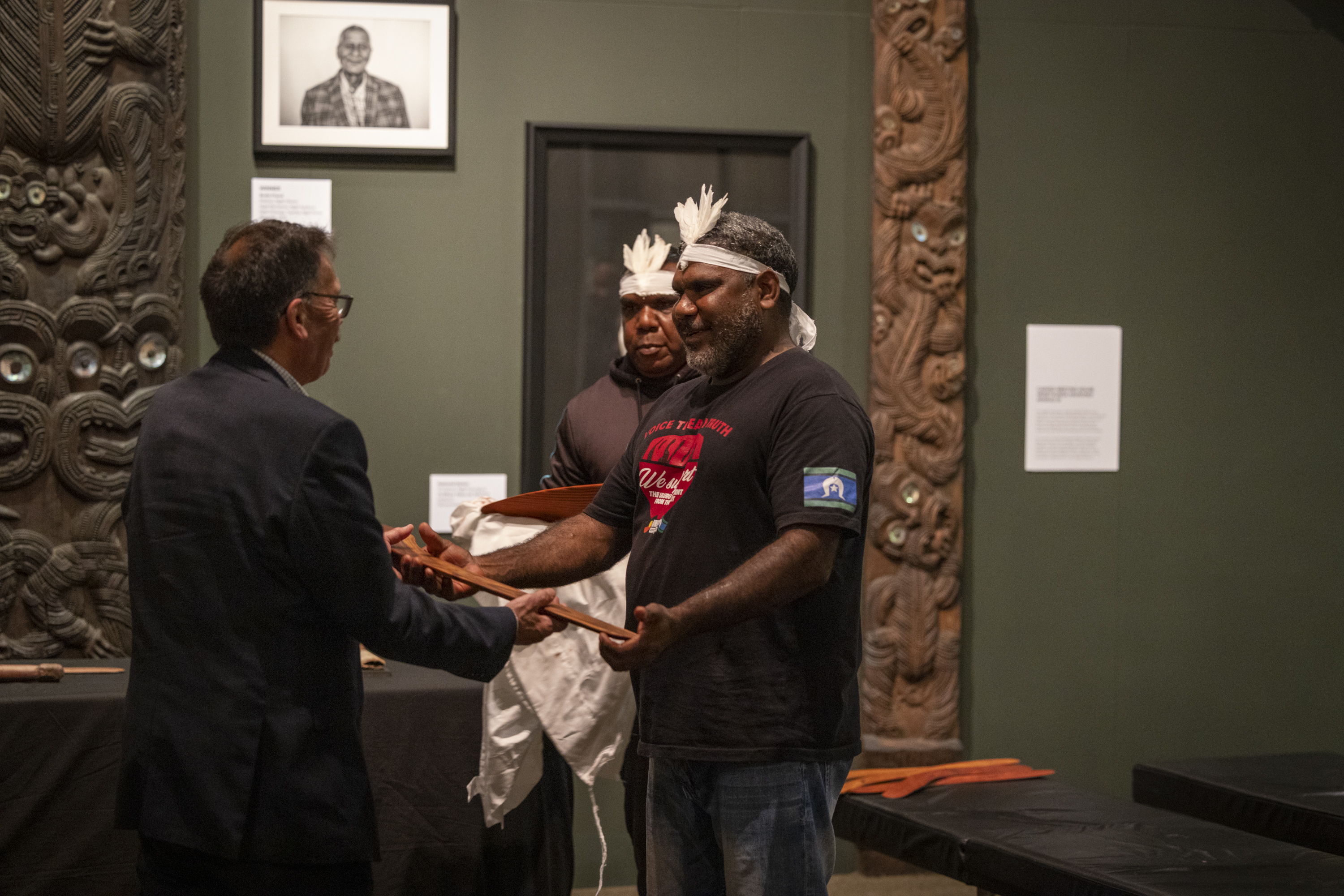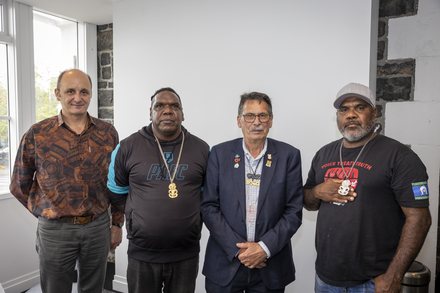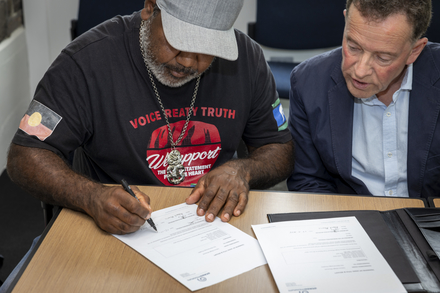Six culturally-important items belonging to Warumungu people have left the Tūhura Otago Museum in Dunedin in New Zealand to travel to Australia following a handover ceremony today.
The Warumungu people are the traditional custodians of land in and around the township of Tennant Creek. Almost a century ago the Tūhura Otago Museum in Dunedin began to acquire Warumungu material including a kalpunta (boomerang), palya/kupija (adze) and a selection of marttan (stone knife). These were collected originally in the late 19th or early 20th century by James Field, the telegraph station master in Tennant Creek, and Walter Baldwin Spencer, the British-born anthropologist.
The acquisitions resulted from exchanges with Museum Victoria in 1923 and 1937 and an exchange with amateur archaeologist and ethnologist Frederick Vincent Knapp in 1910.
The local people of Kāi Tahu land yesterday welcomed the Warumungu delegation with a pōwhiri (welcoming ceremony) to initiate the handover of the collection with the appropriate cultural protocols. This morning the Kāi Tahu and officials from the Tūhura Otago Museum completed the formalities to fulfil their commitment to return the Warumungu material.
Senior Warumungu man, Jimmy Frank, spoke on behalf of his community.
‘We are here to represent our elders and to pick up our mob, our treasures, and take them back home,’ he said. ‘In our way we call it “Nyijinkirri” and it is a promise. It’s a cultural protocol that we follow when we enter other people’s country.
‘Today we give you this shield and a kalpunta [boomerang] as a promise to follow Māori ways while we are on your country. In European words, it’s like a contract. This is the beginning of our relationship so we can carry our friendship into the future. It’s a gift to our Māori brothers and sisters to say thank you for looking after our treasures and we carry the spirit of our elders with us into the future.’
Kāi Tahu spokesperson, Rachel Wesley, said:
‘The trade and exchange of indigenous cultural materials has long been a feature of the colonisation of cultural heritage across the globe, removing tangible links between descendent communities and their past. The long-held idea that museums are the appropriate place for the collection and interpretation of indigenous worldviews is no longer seen as acceptable as it once was, and I celebrate the openness with which Tūhura Otago Museum is returning taoka (treasures) to the Warumungu and in rectifying the wrongs of the past.’
Since 1868, the Tūhura Otago Museum has accumulated one of the finest and most diverse collections of taoka in Aotearoa New Zealand. Robert Morris, the Director of Collections, Research and Education, explained why the museum agreed to the return request.
‘In recent years, supported by our Māori Advisory Committee, the Museum’s Trust Board has embedded its support for the cultural property clauses of the United Nations Declaration on the Rights of Indigenous Peoples, which calls for providing access to and repatriation of ceremonial material and ancestral remains where appropriate,’ Mr Morris said. ‘This recognises that returning these treasures to country is part of ensuring their culturally appropriate care and seeing their story in the community reinvigorated’.
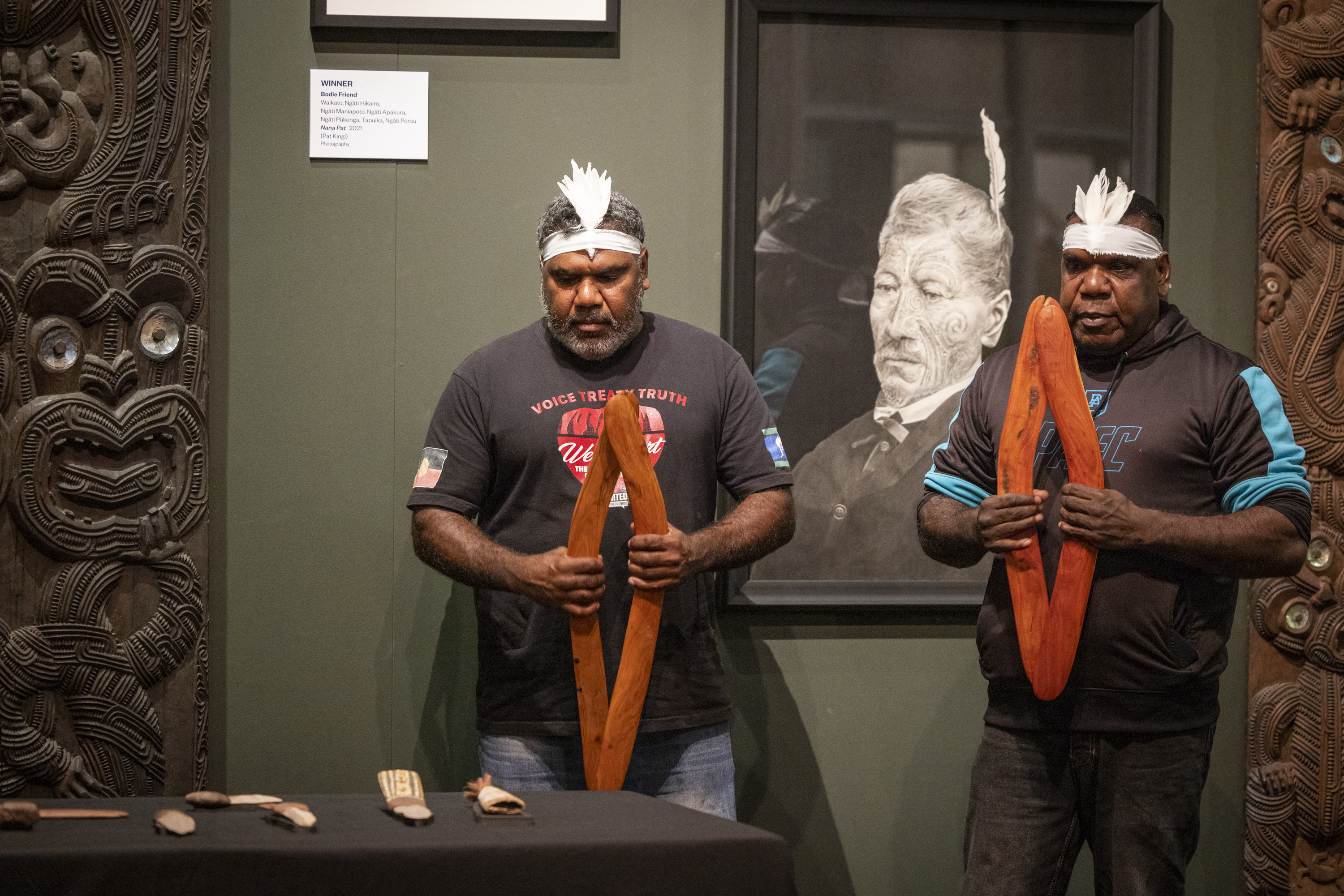
Senior Warumungu men Jimmy Frank Jupurrula and Laurance Williams Japangarti receiving cultural material from a return at the Tūhura Otago Museum in Dunedin, New Zealand.
Senior Warumungu men Jimmy Frank Jupurrula and Laurance Williams Japangarti receiving cultural material from a return at the Tūhura Otago Museum in Dunedin, New Zealand.
AIATSIS is the lead agency for the Australian Government’s Return of Cultural Heritage (RoCH) program that identifies cultural materials held in collections outside of Australia and then initiates discussion on their return.
In March 2021 AIATSIS began talks on this material between senior Warumungu men, members of the museum’s Māori Advisory Committee, and museum staff. In June 2022 the museum’s Trust Board endorsed a repatriation request, with a public announcement in September.
From Canberra the Minister for Indigenous Australians, the Hon Linda Burney MP, commented on the value the community places on such return activity.
‘The return of these cultural heritage materials represents a significant moment for the Warumungu people,’ Minister Burney said. ‘These precious objects will be returned to Country, back to their rightful owners.
‘I commend the team at AIATSIS for the years of work it has undertaken with the Tūhura Otago Museum to ensure the return of this material.
‘With more than 100,000 items still held by international institutions, I hope to see more culturally-significant objects returned overtime.’
The AIATSIS CEO, Dhunghutti man Craig Ritchie, described how such returns contribute to building community identity.
‘The return of cultural heritage material is a key aspiration of Aboriginal and Torres Strait Islander peoples,’ Mr Ritchie said.
‘The return of this material will support the intergenerational transfer of knowledge among the Warumungu people and support the continuation of important cultural practices. Young people in the community will be able to look at and handle these tools crafted by their ancestors, and from that better understand their own connections with the Country of their ancestors.
‘AIATSIS is very grateful to Kāi Tahu [the local iwi], who through the Māori Advisory Committee have provided care for these items while these were on their Country.
‘We are also grateful to the Tūhura Otago Museum Māori Advisory Committee, the museum Trust Board, and the museum staff for way they have responded with open minds and open hearts to the representatives from the Warumungu community. We thank them for their positive engagement with AIATSIS.’
The Warumungu community has indicated that a selection of the returned material will be displayed eventually at the Nyinkka Nyunyu Art and Culture Centre in Tennant Creek.
- Read more about the work of AIATSIS in returning cultural heritage
- More about the Tūhura Otago Museum
- Read about the Spencer and Gillen collection
- Six cultural objects of Warumungu origin to return from NZ museum later this year
Media enquiries
AIATSIS: commsmedia@aiatsis.gov.au or +61 476 843 522
(Contact AIATSIS for images and video from this event)
Tūhura Otago Museum: kate.oktay@otagomuseum.nz or +64 20 4197 1907
